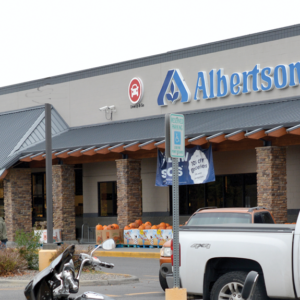Custom Bilt Metals, 3001 N Skyway Circle – Ste 160, Irving TX, 214-699-4871, Anne Alexander, retail sales
Sprinkler Blowout, 3000 La Paz Dr, 861-7757, Nicholas O’Connor, service
Trident Contracting & Design, 423 Kuhlman Dr, 698-7821, Jeremy Austin, general contractors
Dragonfly Recovery Resources LLC, 206 N 29th St #24, 598-9032, Darlene Woodenlegs, service
The Floor Doctor, 505 24th St w, 425-0303, James and Michelle Scarber, service
Fingers and Fries, 435 Sherwood, 647-7976, Nathaniel Davis, restaurants
Town Pump of Billings 13, 3975 King Ave W – Ste 1, 998-6643, beer license
Montana Lil’s Casino & Liquor Store, 3975 King Ave w – Ste 2, 998-6642, Silver Tip Lounge Corporation, liquor license
Magic City Maids, 428 Kuhlman Dr, 850-4484, Jade Matte, service
BW Blacksmith Coffee (Lewis), 2335 Lewis Ave, 386-965-2420, Laura Willems, restaurant
Omega Home Maintenance, 2122 Pueblo Dr, 861-5234, Brian Longenecker, service
Like Home LLC, 731 Sapphire Ave, 880-5368, Patrick O’Neill, real estate rental
Treasure State Travel, 1118 Minuteman St, 591-7885, Brad Hrubes, service
Lowkey Lofi LLC, 3225 McLeod Dr – Ste 100, Las Vegas, NV, 201-5370, Skye Jackson, service
Pundit LLC, 631 N 26th St, 647-2132, Phillips Bridges, real estate rental
Arts Market, 317 N 13th St, 248-7446, Andrew Thompson, retail sales
Shebee Random, 3061 S Daffodil, 694-8677, Autumn Hengelfelt/Krista Alden, retail sales
Grizzly Prep MT, 205 Erie Dr – Ste 2, 698-2729, Alexandra Meiers, retail sales
Fresco Juice Co, 2710 1st Ave N – Ste 102, 698-5969, Cindy Beers, restaurants
Barbara Garrett Fine Art, 1660 Country Manor Blvd #223B, retail sales
Crudades Construction, 17 Jackson St, 850-2552, Michael Machler, Autumn Hengelfelt/Krista Alden, retail sales
Lindsey Byars, 5535 Elysian Rd, 200-1410, Lindsey Byars, real estate rental
Longhorn Contracting, 8050 S workshop, 490-3392, 490-3392, Shelby Wilkey, service
Swift Mobile Oil LLC, 2120 Yellowstone Ave, 420-8580, Brendon Swift/Jacob Montgomery, service
F&H Contracting & Fence LLC, 1010 Yellowstone Ave #1, 694-8143, Teran Fitch/Kyle Fitch, service
Sharp Services, 1098 Sierra Granda Blvd, Jared Sharp, general contractors
Seaspace International Forwarders USA Inc, 5332 Green Teal Dr, 925-468-0100, Kevin & Marilena Beehn, service
KF Bookkeeping Solutions, 2928 Beech Ave, 281-2962, Kristen Frank, service
Alay’s Home Services, 3900 Olympic Blvd, Apt H202, 694-6300, Alaina Sisk, service
Majic City Ballons, 1409 Topanga Ave, 927-2682, Donya Wimer, service
North West Beauty Supply LLC, 1313 Grand Ave #7, 714-322-1662, Baotram Nguyen, wholesale
Rimrock Hobbies, 811 16th St W – Ste B, 259-5354, Liam Dunne, retail sales
Wovek Inc, 3970 Ave D – Ste A, 969-5444, Kevin Wood, general contractors
Top Deck Medical Aesthetics, 670 King Park Dr – Ste 5, 490-5220, Jamie Decker, service
Delta Family Therapy, 206 N 29th St – Ste 26, 925-565-7535, Rachel Stegman, service
Gia Lawncare & Snow Removal, 135 Monarch St, 598-3943, Richard Todd, service
Sachithra/Gregory Arno, 6027 Catherina Ct, 672-5876, Gregory Arno, real estate rental
Gregory Arno, 6027 Catherina Ct, 240-6997, Gregory Arno, service
Cutthroat Lawn Service, 1837 Ave E, 661-6366, Justice Lofgren, service
Oddball Werx, 1133 Yellowstone Ave, 647-0064, Alan Andrews, service
Toddler Town Daycare, 2376 Main St, 307-840-1197, Teresa Ganenbein, service
Yellowstone Country Club, 3200 Paul Allen Way, 656-1701, Jeffrie Hunter, liquor license
Everbright Cleaning Services, 315 S 26th St, 860-3358, Noah Price, service
Mountain Man Defense LLC, 4427 Ryan Ave, 366-6739, Hunter Cattaneo, retail sales
Regenerative Health 360, 1223 Mullowney Ln, 704-891-7796, Jeffrey Jones, service
Yellowstone Exteriors, 2616 Lillis Ln, 601-0499, Andrew Buchholz, general contractors
Sterrett Construction, 1843 Wicks Ln, 661-3524, Nathaniel Sterrett, general contractors
Classy n Sassy Coffee LLC (Henesta), 2021 Henesta Dr, 370-1752, Cassandra Dennison, restaurants
Spotlight Productions Inc, 2120 Sunnyview Ln, 698-8278, Anne Gauer, service
E-Rock Masonry, 941 Lewis Ave, 946-2915, Eric Slehofer, service
Gray’s Electric, 738 N Burnt Fork Rd, Stevensville, 552-2617, David Gray, electrical contractors
Mission Freedom LLC, 3433 Glenfinnan Rd, 707-304-0909, Ethan Auch, retail sales
Sweet Doggy Good, 510 18th St W, 608-3377, Deanna Caluya, retail sales
Neumann Construction LLC, 321 S 24th St W – Ste 1, 670-8383, Tony Neumann, general contractors
Two Whistle Construction LLC, 1177 Hemingway Ave, 998-9042, Rudy Old Crow, general contractors
Sweet Tooth, 3941 Rimrock Rd, 672-1594, Cindy Sahli, restaurants
Black Diamond Decks, 2337 Gleneagles Blvd, 591-0621, Trevin Ophus, general contractors
Alex Allred, 4506 Bowman Dr, 697-1604, Alex Allred, service
Sigsys Inc, 1932 E Deere Ave #220, Santa Ana CA, 949-825-6031, Larry Michael, general contractors
Jaybird Services LLC, 884 Tierra Dr, n/a, Jeremiah & Tami Goff, service
MT Paving LLC, 524 ½ NE Main, Lewistown MT, 498-4166, James Uzlic
ADK Consulting LLC, 801 Providence Island Ct, Jacksonville FLA, 904-536-8102, Douglas Kuelpman, service
The Brush Brothers, 2115 Canyon Dr, 855-4729, Kyle Jones, service
Montana Electrical Services, 1162 El Rancho Dr, 530-5004, James Sims, electrical contractors
NW Extreme Installers dba Premier Services Group, 8800 SE Sunnyside Rd – Ste 3155, Clackamas OR, 971-377-2197, Rich Smothers, general contractors
Security View LLC, 5301 Bell Ave, 561-3497, Jade Evenson, service
Lake Painting Company, 11509 Rose Ave, Atwater CA, 209-648-8918, Marvin Lake, service
Fat Taco Food Truck, 501 2nd Ave, Laurel MT, 855-5500, Jamie Frank, restaurants
Daisey Jones Closet/Kellerman Designs, 4240 Trailmaster Dr, 208-3588, Marilyn Haney, retail sales
Puppybreathe Poms of Yellowstone, 4240 Trailmaster Dr, 208-3588, Marilyn Haney, service
Real Bird Camp, 818 2nd St West, Hardin MT, 860-2806, Lucy Real Bird, retail sales


